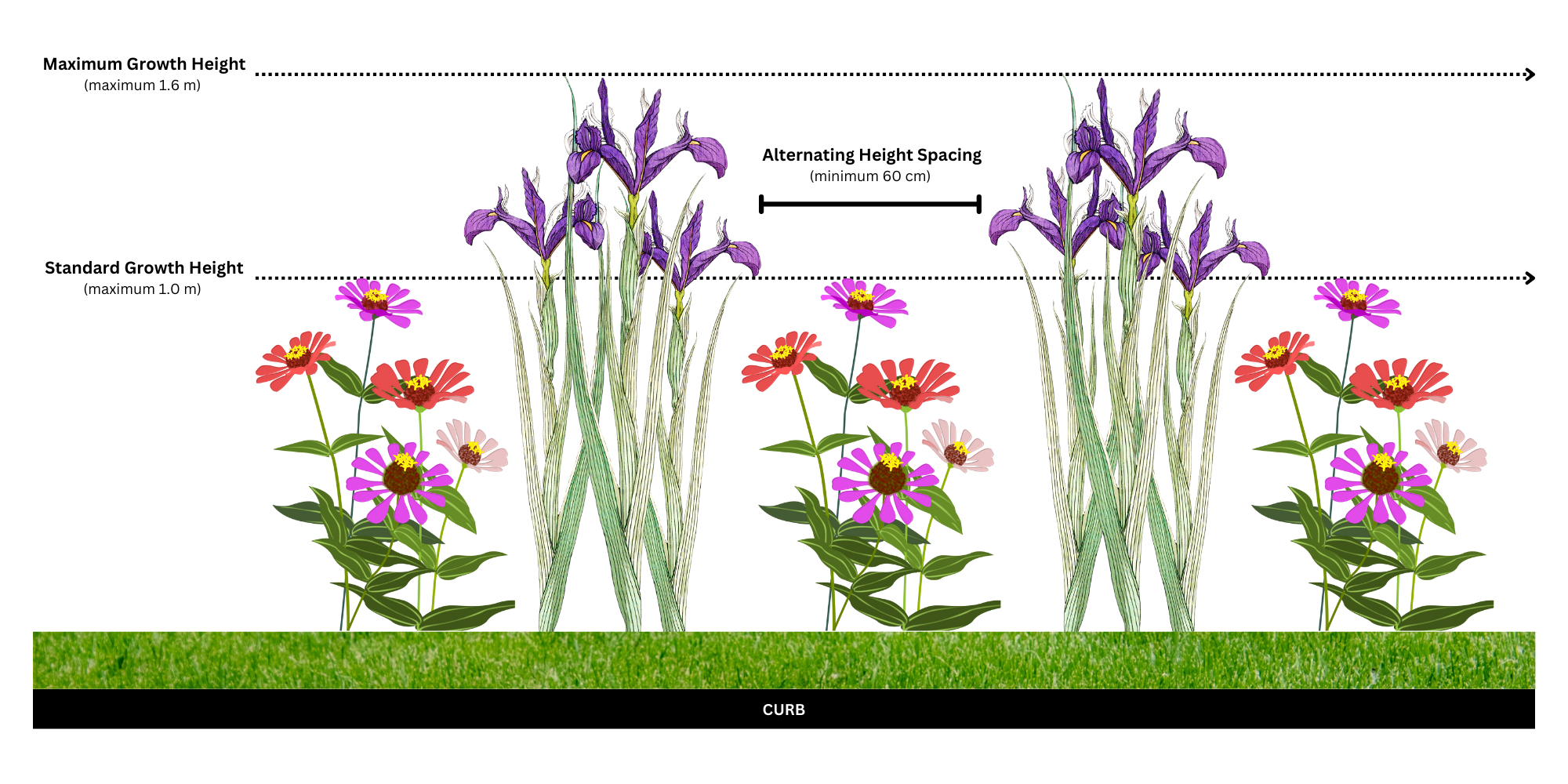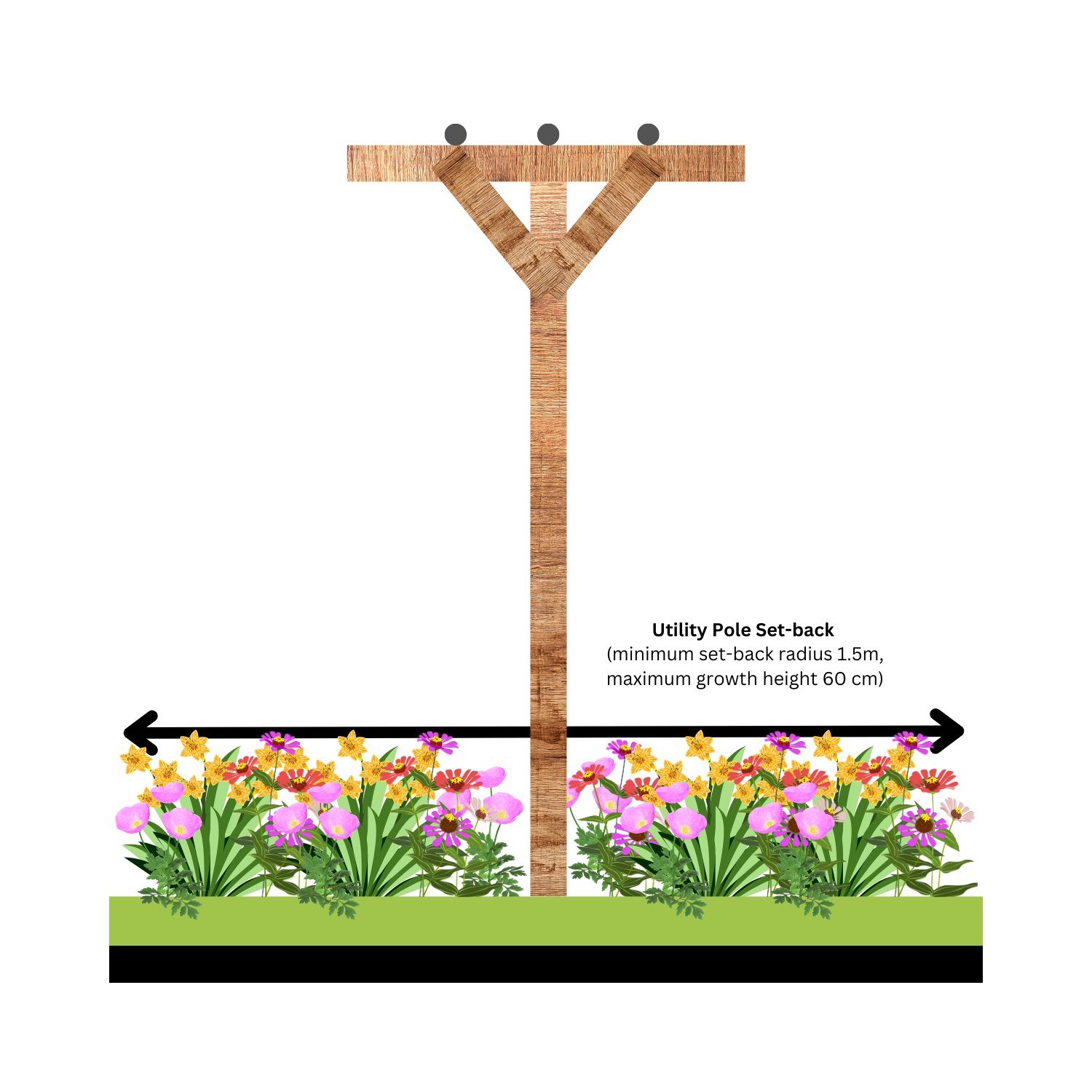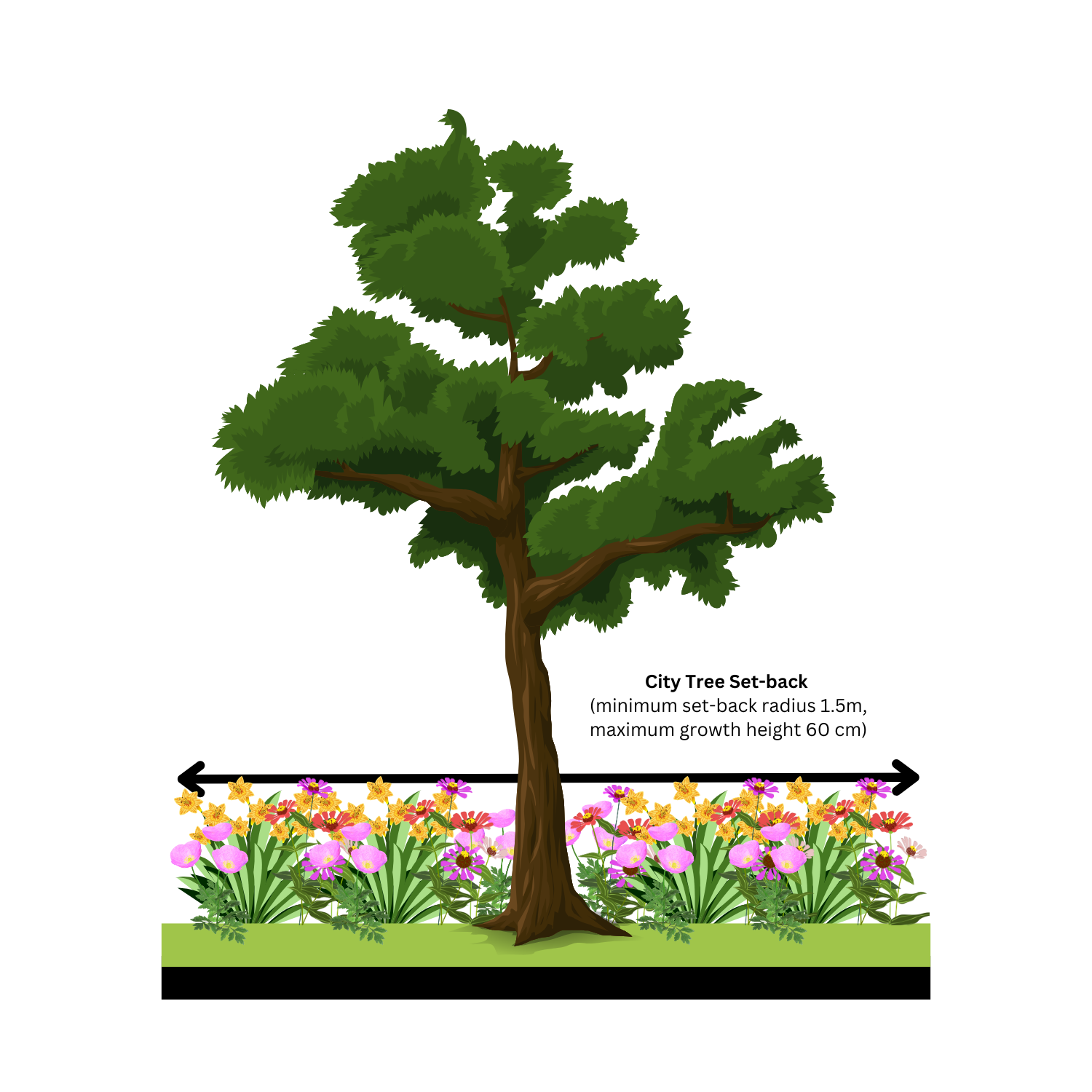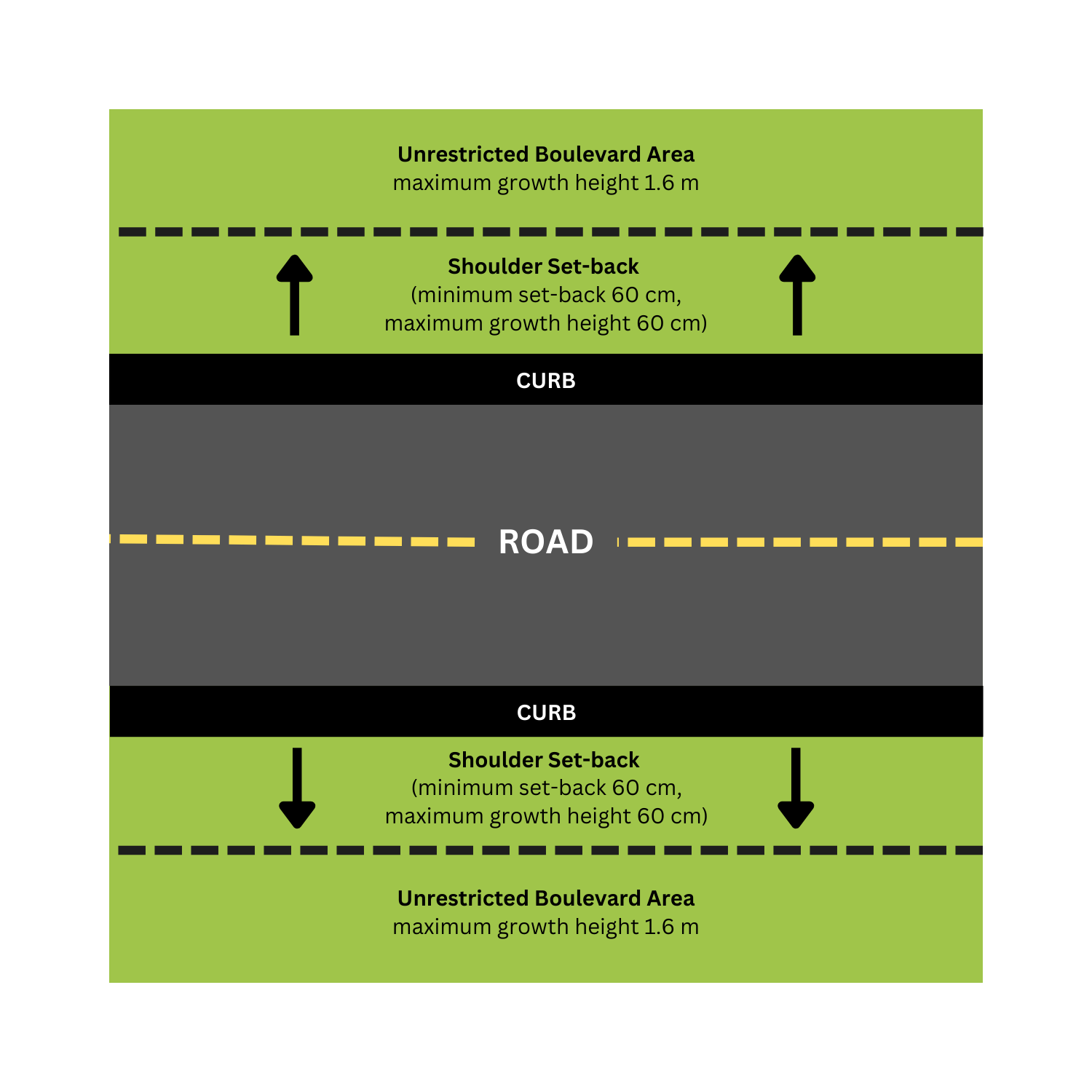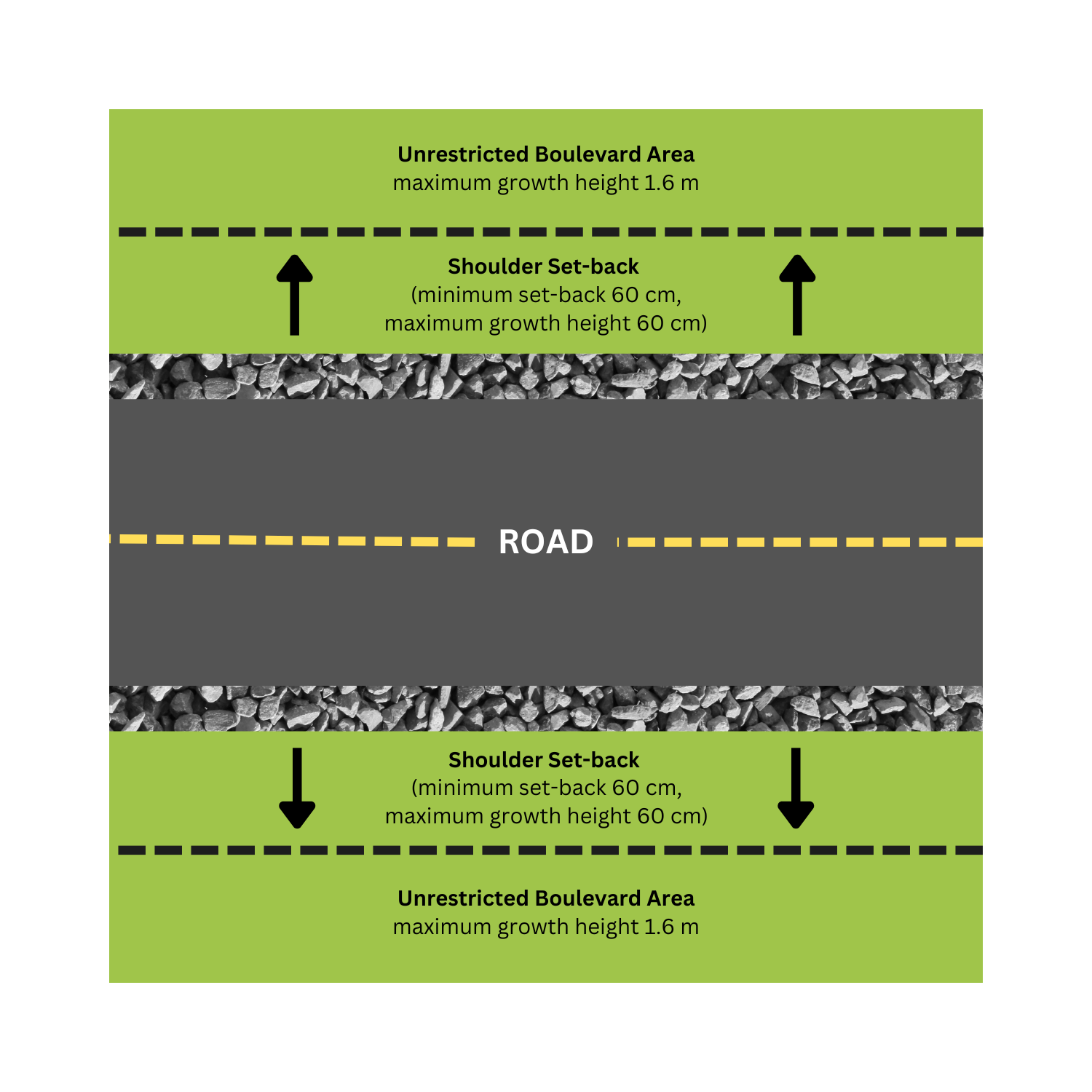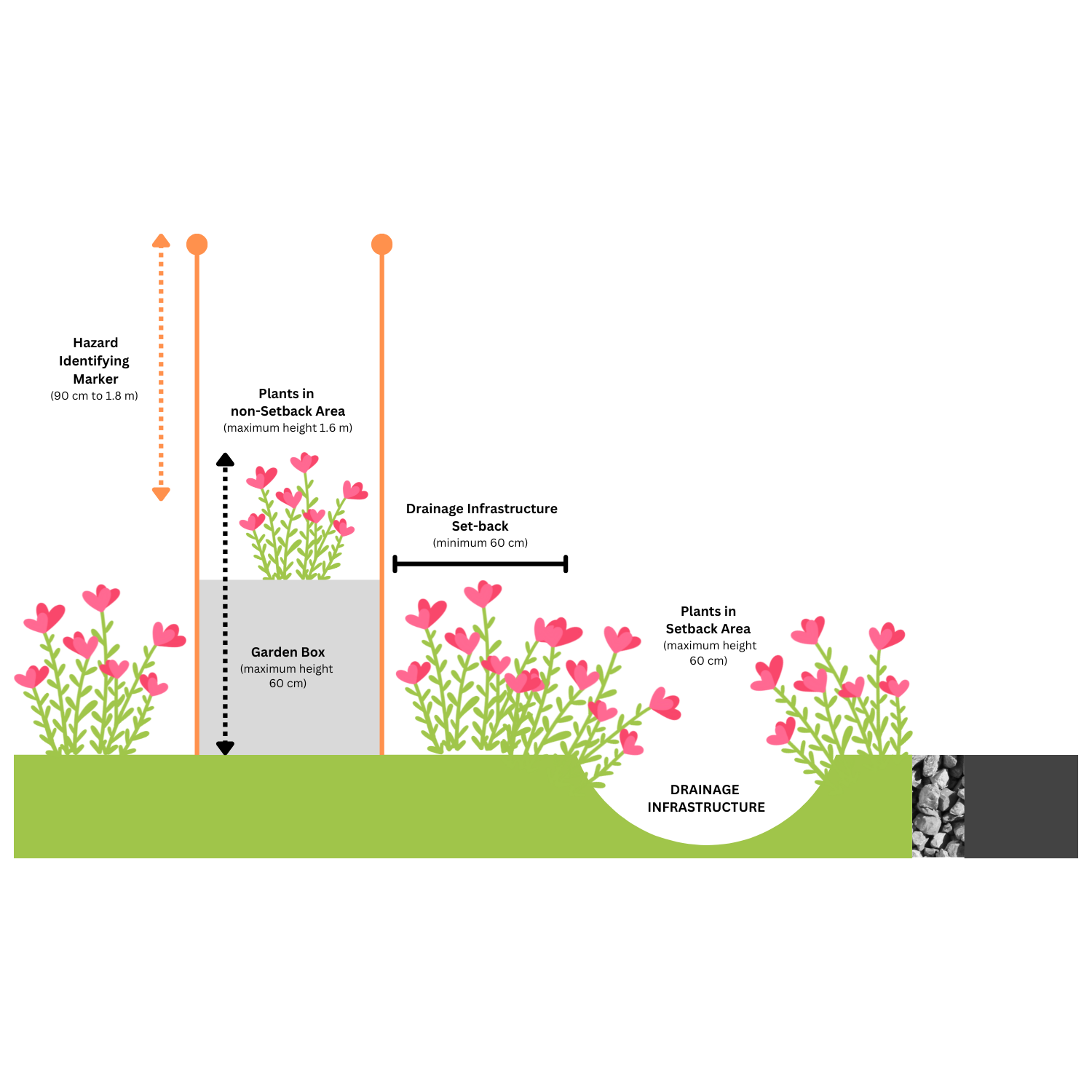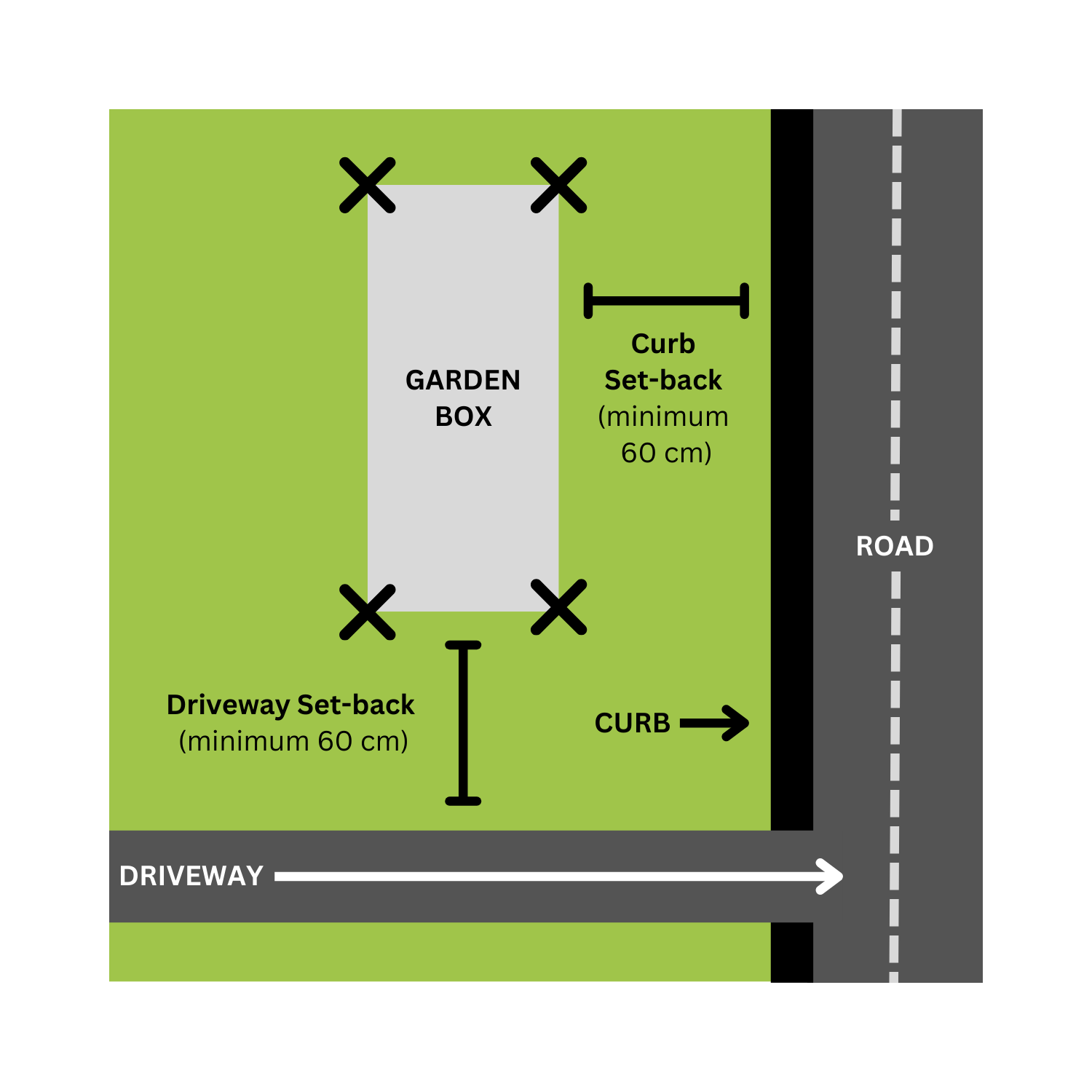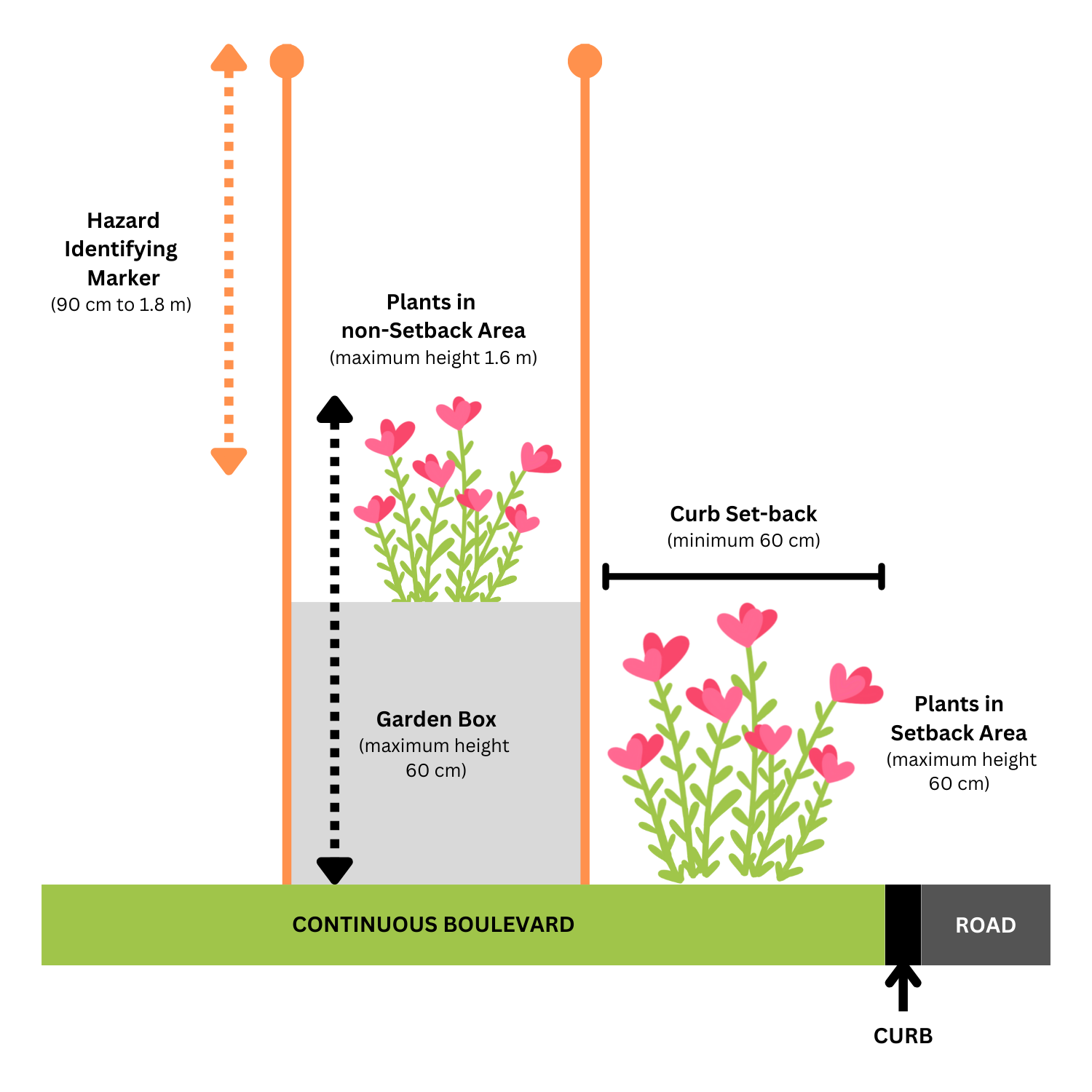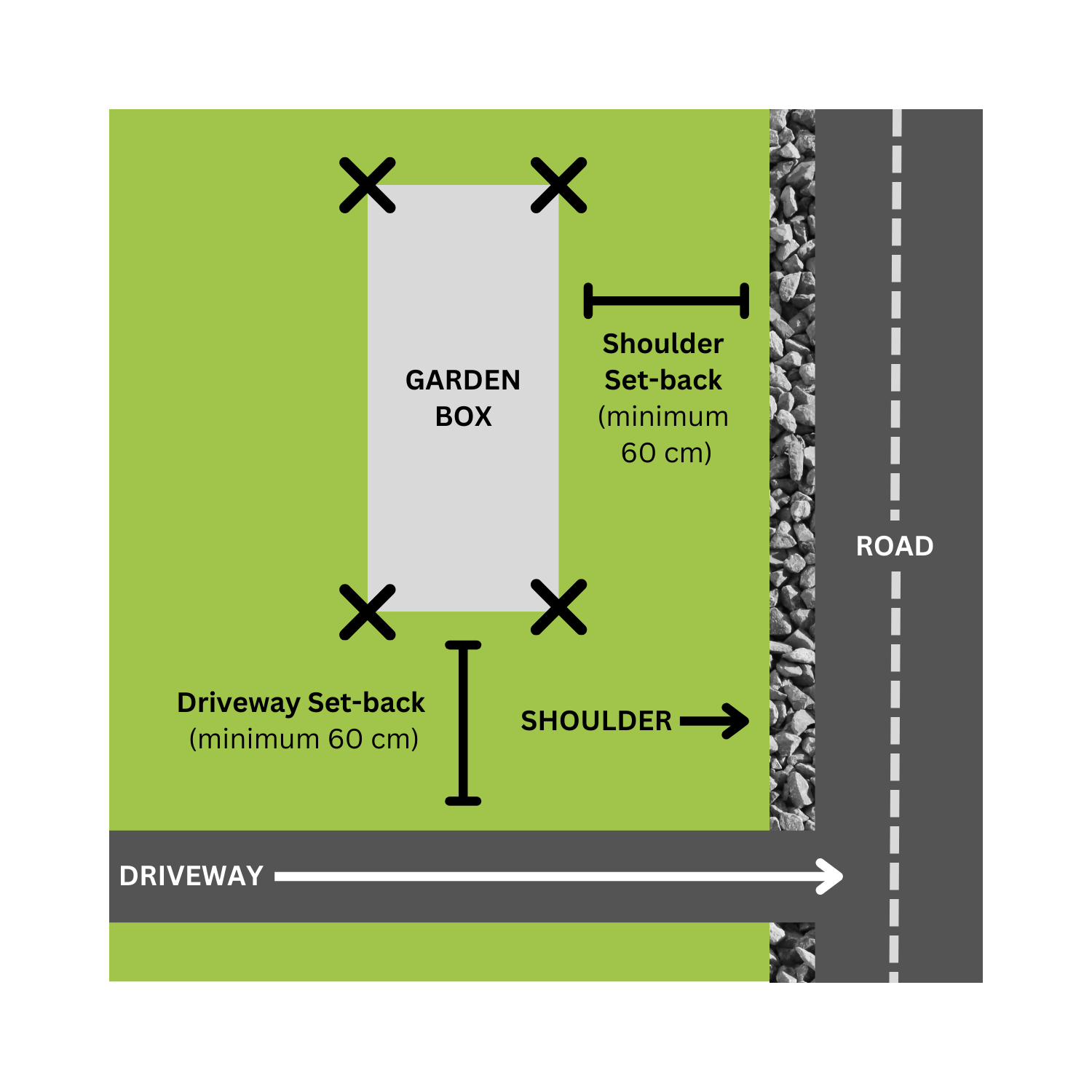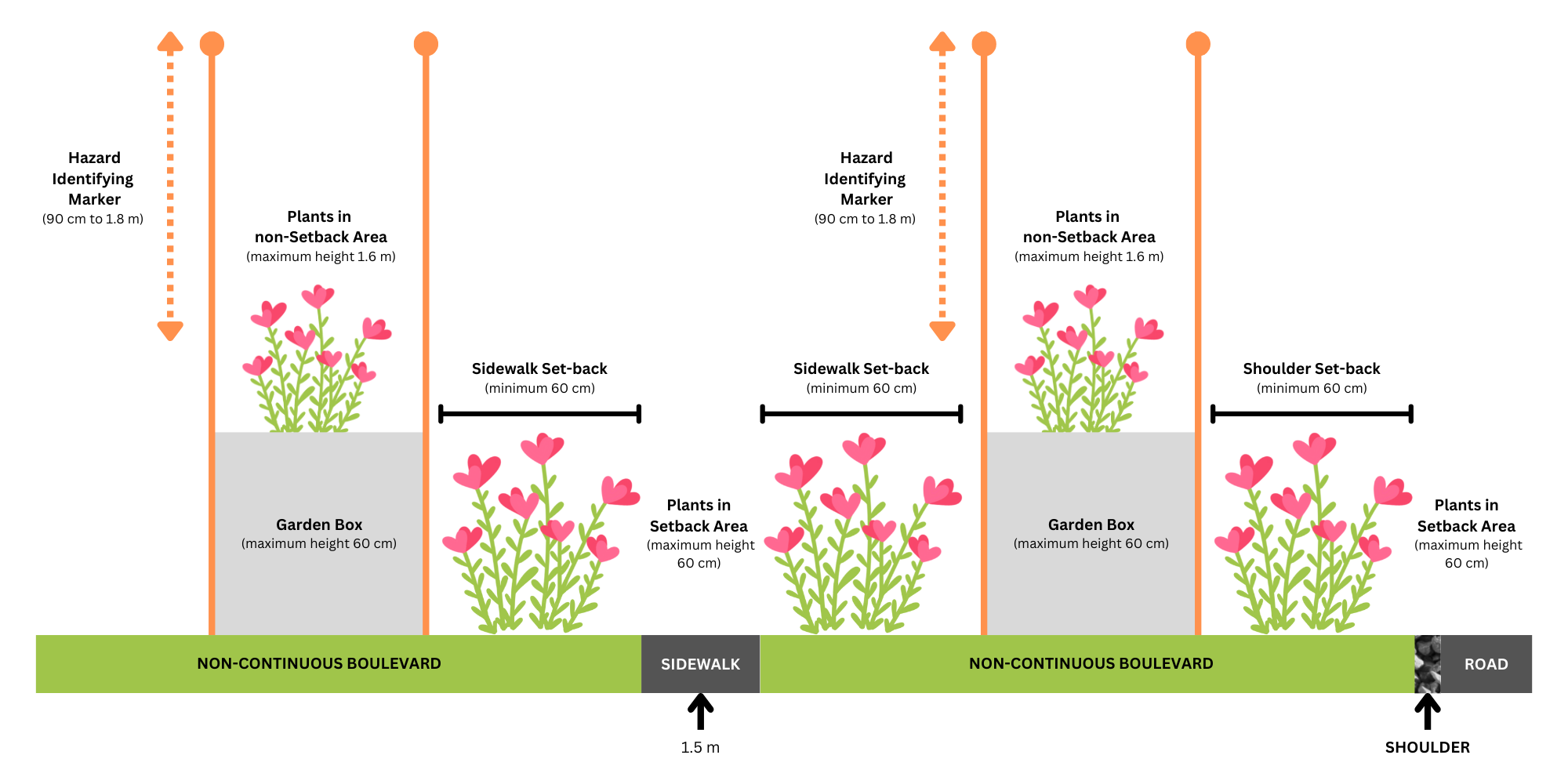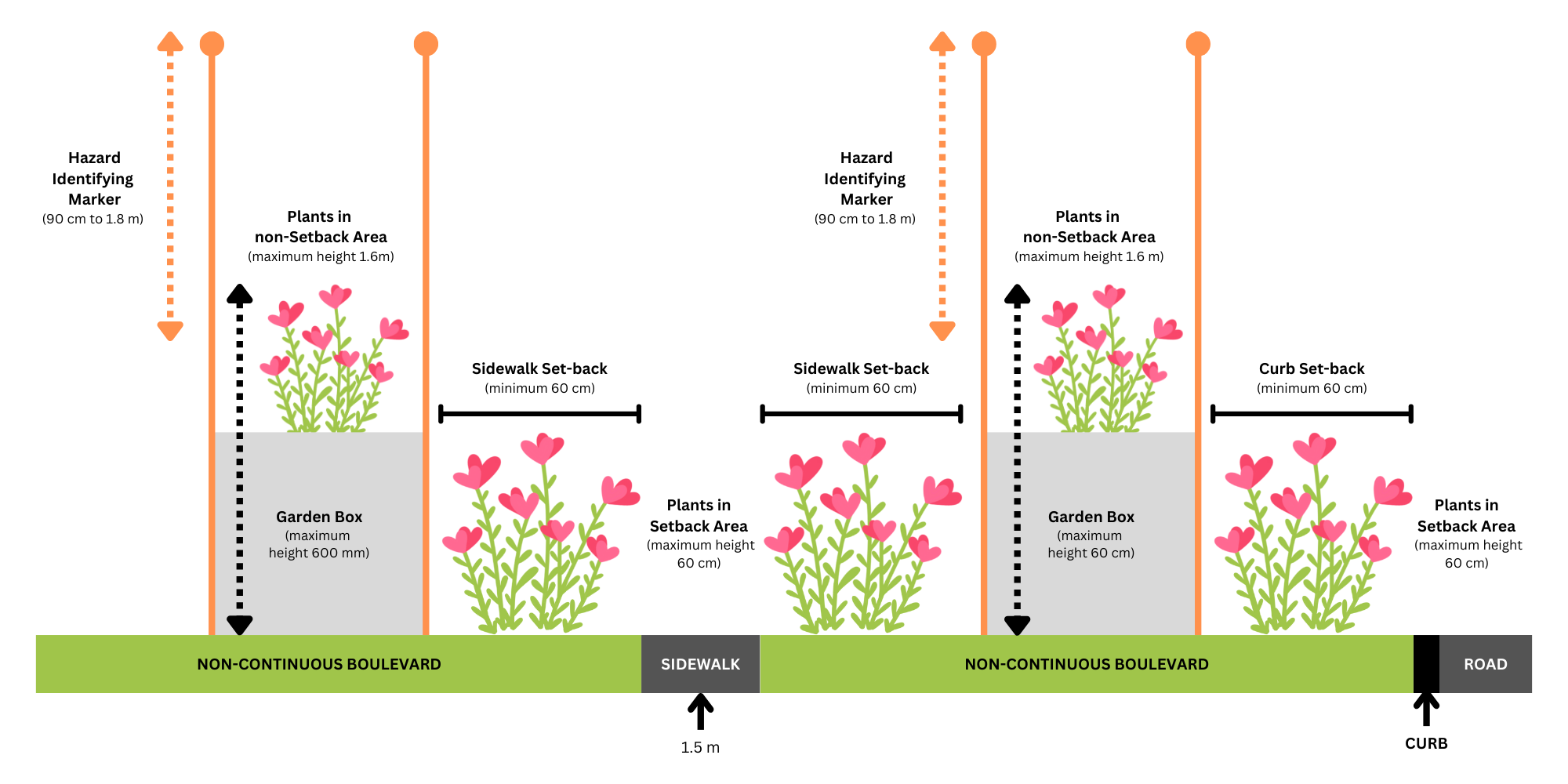Homeowners, tenants, and neighbourhood gardeners!
Let us know where you’re planning to plant a garden.
All boulevard gardeners must sign the Declaration Acknowledgement Agreement before they establish a garden.
Complete a physical Declaration Acknowledgment Agreement at City Hall, or learn how to acknowledge and declare your garden online.
Submit your Boulevard Garden Declaration
Establishing a Boulevard Garden
Creating a Boulevard Garden can help slow biodiversity loss, and help reduce the impacts of climate change and food insecurity. Join the movement and help transform our City by planting a boulevard garden today!
What to Plant in a Boulevard Garden
The City of Thunder Bay’s Boulevard Garden and Maintenance By-law allows you to grow a wide variety of herbaceous plants and small shrubs in your boulevard garden. There are many different plant species, so it can be hard to know where to start.
The City encourages you to plant native species whenever possible. Native plant species are awesome at restoring native habitat. They compete with invasive species, create habitat for other native wildlife, and generally require less maintenance than their non-native counterparts.
Learn more about the native species that you can plant in your garden with information from the Lakehead Region Conservation Authority Native Plants of Northwestern Ontario.
Height Restrictions and Set-backs
Keep the following height restrictions and set-back distances in mind as you plan your garden.
| Maximum Height Restrictions |
|
The maximum height limit for the herbaceous (leafy) plants grown on your boulevard is 1.6 m. To ensure that clear sightlines exist in all rights-of-way, plants that grow between 1.0 m to 1.6 m in height must follow an alternating planting pattern.
Alternating Planting Pattern for Maximum Growth Height Plants
|
| Shrub Restrictions |
| The maximum height limit for shrubs is 1.0 m. To maintain clear sightlines in all rights-of-way and allow sound to travel effectively through the boulevard area, all shrubs must follow an alternating planting pattern.
Quick-Facts: Alternating Planting Pattern for Shrubs
|
| Set-Back Areas |
|
Set-back areas surround important infrastructure that City and utility workers need easy access to. The maximum height limit for the plants grown in the set-back areas of your boulevard garden is 60 cm. Set-back areas include:
|
| Garden Boxes and Support Structures |
| If you would like to grow edible plants in your boulevard garden, you should consider building a garden box. Garden boxes are straight-walled containers built to hold soil and herbaceous plants. They may provide better quality soil for your plants and allow you to use various kinds of support structures that will help you increase the yield of your garden.
Please keep the following rules in mind when building a garden box:
|
Edible Plants
Salt, sand, and other de-icing agents are used on Thunder Bay’s roads and sidewalks throughout the winter months. When the snow and ice melt in the spring, these chemicals find their way onto the boulevard and react with the soil to make bioavailable heavy metals. When fruit or vegetables are planted in these contaminated soils, they can pass along the harmful heavy metals to people who eat that fruit or vegetable.
The City of Thunder Bay cannot provide any information about the soil composition of residential boulevards. For your safety, you should have your soil tested for bioavailable heavy metals before you start growing edible plants. For more information on soil testing, please contact Lakehead University’s Environmental Laboratory at 807-343-8010, extension 8179.
Street Trees
The Parks and Open Spaces Division maintains the integrity of our urban forest canopy by planting and maintaining trees on boulevards throughout the City. This work is carefully planned as outlined in the Urban Forest Management Plan, the Climate Adaptation Plan, and the Net-Zero Strategy!
The Boulevard Garden and Maintenance By-law does not allow participants to plant trees in the boulevard area. If you would like a street tree planted in the boulevard area, contact Infrastructure and Operations Dispatch at 807-625-2195.
Please note that some boulevard locations will not qualify for street tree planting due to space and utility restrictions. Boulevard areas will be assessed by qualified individuals who will consider the requirements of a tree to survive at that site. They will account for nearby paving, overhead wires, permeable growing space, and underground utilities before planting occurs.
| Invasive Species and Prohibited Plants |
| Invasive species are plants, animals, and micro-organisms that humans introduce to a new environment. These species take over habitats and decrease biodiversity by out-competing native species for food, reproducing rapidly, and interrupting food chains. This can result in threats to the environment, the local economy, and human health!
Please help us avoid the negative effects of invasive species. Do not plant the following invasive species in your boulevard garden:
|
| How to Protect Private Utilities and Public Infrastructure |
| Stormwater Engineers use infrastructure housed in boulevard areas to prevent flooding during storms and spring melts. The original shape and grade of the boulevard must be maintained to move water effectively.
Protect stormwater infrastructure by making sure that your boulevard garden:
Internet cables, water and wastewater pipes, electrical transformers, and City trees are housed in your boulevard, too! Protect this infrastructure by:
|
Maintaining a Boulevard Garden
If you do not choose to plant a boulevard garden, the turfgrass in your boulevard area should not grow over 20 cm in height. Naturalized boulevard gardens should be intentionally planted and maintained. You cannot create a naturalized boulevard garden by letting the turfgrass on boulevards grow freely because naturalized gardens use specific plants to mimic the region’s natural landscape.
| Preventing Nuisance Litter and Waste |
|
Anyone who establishes or maintains a boulevard garden should keep the boulevard area free of litter and other waste materials. Litter and waste materials include:
When materials such as aged compost, yard waste, brush, and branches are integrated into a planned, naturalized garden area they are not considered nuisance litter or waste material. These naturalized garden features can create ideal habitats for native pollinators! For public safety, please do not place these items in set-back areas or in places where they may cause tripping hazards. |
| Safe Use of Pesticides, Herbicides, Rodenticides |
|
Please do not use synthetic pesticides, herbicides, or rodenticides in your boulevard garden. The toxic chemicals found in store-bought pesticides are not selective – they will kill beneficial wildlife just as easily as pests. You can avoid unwanted garden pests by:
If you already have a pest infestation, try:
|
| Safe Use of Fertilizers |
| Please do not use synthetic fertilizers in your boulevard garden. Storms and spring melts will carry these chemicals off your boulevard and into our waterways, where they impact aquatic ecosystems by kick-starting excessive algae growth.
Instead of using store-bought fertilizers, try one of these eco-friendly alternatives:
These natural fertilizers are best applied after a rainfall. Moist soil will soak up nutrients more easily, and your compost will not be washed away by the rain. |
Frequently Asked Questions
| What plant species can I grow in my boulevard garden? | ||||||||||||||||||||||||||||||
|
Try and plant native species whenever possible. Native plant species are awesome habitat restorers. They compete with invasive species, create habitat for other native wildlife, and generally require less maintenance than their non-native counterparts. Learn more about the native species that you can plant in your garden with information from the Lakehead Region Conservation Authority Native Plants of Northwestern Ontario. |
||||||||||||||||||||||||||||||
| I have pests in my garden. How can I get rid of them? | ||||||||||||||||||||||||||||||
| Please do not use synthetic pesticides, herbicides, and rodenticides in your boulevard garden. The toxic chemicals found in store-bought pesticides are not selective – they will kill beneficial wildlife just as easily as pests!
Instead, you can try:
|
||||||||||||||||||||||||||||||
| What kind of fertilizer can I use in my boulevard garden? | ||||||||||||||||||||||||||||||
| Please do not use synthetic fertilizers in your boulevard garden. Storms and spring melts will carry these chemicals off your boulevard and into our waterways, where they impact aquatic ecosystems by kick-starting excessive algal growth!
Instead of using store-bought fertilizers, try:
These natural fertilizers are best applied after a rainfall event. Moist soil will soak up nutrients more easily, and your compost will not be washed away! |
||||||||||||||||||||||||||||||
| What is nuisance litter? | ||||||||||||||||||||||||||||||
| Nuisance litter can include: | ||||||||||||||||||||||||||||||
| I leave my plants to seed in the fall and use aged compost in my garden through the growing season. Am I creating nuisance litter? | ||||||||||||||||||||||||||||||
| When materials such as aged compost, yard waste, brush, and branches are integrated into a planned, naturalized garden area they are not considered nuisance litter or waste material. These naturalized garden features can create ideal habitats for native pollinators! To ensure public safety, please do not place these items in set-back areas or in places where they may cause tripping hazards. | ||||||||||||||||||||||||||||||
| Who enforces similar by-laws? | ||||||||||||||||||||||||||||||
| At least twenty-six other municipalities have boulevard garden guidelines or by-laws. This includes places like Barrie, Centre Wellington, Guelph, Kelowna, Kitchener-Waterloo, Markham, Mississauga, Oakville, Ottawa, Regina, Saskatoon, Toronto, Vancouver, Victoria, Cambridge, Caledon, Clarington, Coburg, Edmonton, Halifax, Oshawa, St. Catharines, Whitby, Winnipeg. That being said, none of the other municipalities in Northern Ontario have regulations in place, which means that we are an exciting first! | ||||||||||||||||||||||||||||||
| I want to grow edible plants, but am worried about soil contamination. Where can I go to get my soil tested? | ||||||||||||||||||||||||||||||
| The City of Thunder Bay cannot provide any information about the soil composition of residential boulevards. To ensure your safety, you should have your soil tested for bioavailable heavy metals before you start growing edible plants. For more information on soil testing, please contact Lakehead University’s Environmental Laboratory at 807-343-8010, extension 8179. | ||||||||||||||||||||||||||||||
| Why is the City introducing the Boulevard Garden By-law? | ||||||||||||||||||||||||||||||
| The Boulevard Garden and Maintenance By-law is a direct response to public requests to allow homeowners, property owners and tenants to utilize City-owned boulevards for gardening. It aligns with the City’s strategic goals of neighborhood beautification, climate action, and environmental sustainability. | ||||||||||||||||||||||||||||||
| Why do I have to declare and acknowledge my boulevard garden? | ||||||||||||||||||||||||||||||
| The Declaration and Acknowledgement Agreements allows gardeners to assume the risk, cost, loss, or expenses associated with planting a boulevard garden. It also makes the distribution of educational materials more efficient and allows City Staff to track program uptake. Learn about Acknowledging and Declaring your garden. | ||||||||||||||||||||||||||||||
| I planted my garden before the Boulevard Garden and Maintenance By-law was written. What do I do now? | ||||||||||||||||||||||||||||||
| Gardeners who established a garden before the Boulevard Garden and Maintenance By-law was put in place are asked to sign the Garden Declaration Acknowledgement Agreement retroactively and comply with the rules set out in the By-Law. | ||||||||||||||||||||||||||||||
| I inherited a boulevard garden from a previous owner. What do I do with it? | ||||||||||||||||||||||||||||||
| You have 180 days to decide if you wish to keep maintaining the boulevard garden. If you would like to continue maintaining the garden, you can declare yourself as the new owner through the Declaration Acknowledgement Agreement Portal. If you do not wish to maintain the garden, you can remove it and replace it with turfgrass. | ||||||||||||||||||||||||||||||
| How does the City handle gardens that interfere with infrastructure or require removal for utility work? | ||||||||||||||||||||||||||||||
| The City and local utility companies that maintain infrastructure within the boulevard may remove or alter boulevard gardens to conduct maintenance or repairs. Re-establishing gardens after this work has been done will be the responsibility of individual gardeners. | ||||||||||||||||||||||||||||||
| How will the City adapt the By-law to new environmental challenges, emerging invasive species, or evolving best practices in urban gardening, given that the current approach relies heavily on resident compliance? | ||||||||||||||||||||||||||||||
| Flexibility is built into the Boulevard Garden and Maintenance By-law. We will regularly review the list of prohibited species, update guidelines as new science emerges, and consult with environmental experts. If conditions change—such as new invasive species threats—we can amend the By-law quickly. Public education and stakeholder engagement will be ongoing so our approach remains current and responsive. | ||||||||||||||||||||||||||||||
| Why are above-grade non-permeable objects and structures such as garden gnomes not allowed in boulevard gardens? | ||||||||||||||||||||||||||||||
| Above-grade decorative ornaments are a trip hazard in the boulevard area and create impermeable surfaces. That being said, at-grade decorative ornaments such as stepping stones are allowed to cover up to 5% of the boulevard space. | ||||||||||||||||||||||||||||||
| Will the introduction of boulevard gardens conflict with other City priorities, such as snow removal operations, road maintenance, or emergency access routes? | ||||||||||||||||||||||||||||||
| The By-law and associated guidelines are designed with operations in mind. Required setbacks, maximum heights, and seasonal planter box flagging requirements allow snowplows, emergency vehicles, and routine road maintenance crews to operate without impediment. Any garden interfering with City operations may be altered or removed. | ||||||||||||||||||||||||||||||
| I am looking for a different unit of measurement. | ||||||||||||||||||||||||||||||
| Landscape architects work in the metric system. If that isn’t your style, please see the conversion chart below.
|
Contact Us








